"I’ve learned to never say you’ve invented something when it comes to the electric guitar," says Chris DiPinto from DiPinto Guitars, "because it probably already exists on some strange electric from the ‘60s." That’s the problem with the future—it has this strange habit of being a version of the past.
And there’s a popular notion that the future will surely be new and better. "The trick," suggests Tim Shaw from Fender, "is to provide something musically useful. If players aren’t inspired by an instrument, all the ‘new’ in the world isn’t enough."
Chris and Tim are gathered around a virtual Reverb roundtable with ten more experienced bods from the guitar-making world. Look around: there’s Jol Dantzig (Dantzig Guitars, US), Mat Koehler (Gibson Brands, US), Frank Deimel (Deimel Guitarworks, Germany), Otto D’Ambrosio (Eastman Music Company, US), Spring Li (10S Guitars, China), Justin Norvell (Fender Musical Instruments, US), Matt Oram (Fidelity Guitars, UK), Blue Wilding (ESP Guitar Co., US), Dieter Gölsdorf (Duesenberg, Germany), Joe Naylor (Reverend Guitars, US)—and you’ve already met Chris DiPinto (DiPinto Guitars, US) and Tim Shaw (Fender Musical Instruments, US).
We’re all here to talk about the future of the electric guitar. We have the futuristic glasses of water. We have the retro notepads and pencils. And Blue Wilding from ESP already has a view ahead. "The beauty of this thing we all love is that the electric guitar of the future means different things for different people," he tells us. "Some think it’s 3D printed, or made of composite materials. Some think it has more or fewer strings, or tempered frets, or tuners on the saddles." Or… but let’s not get ahead of ourselves.
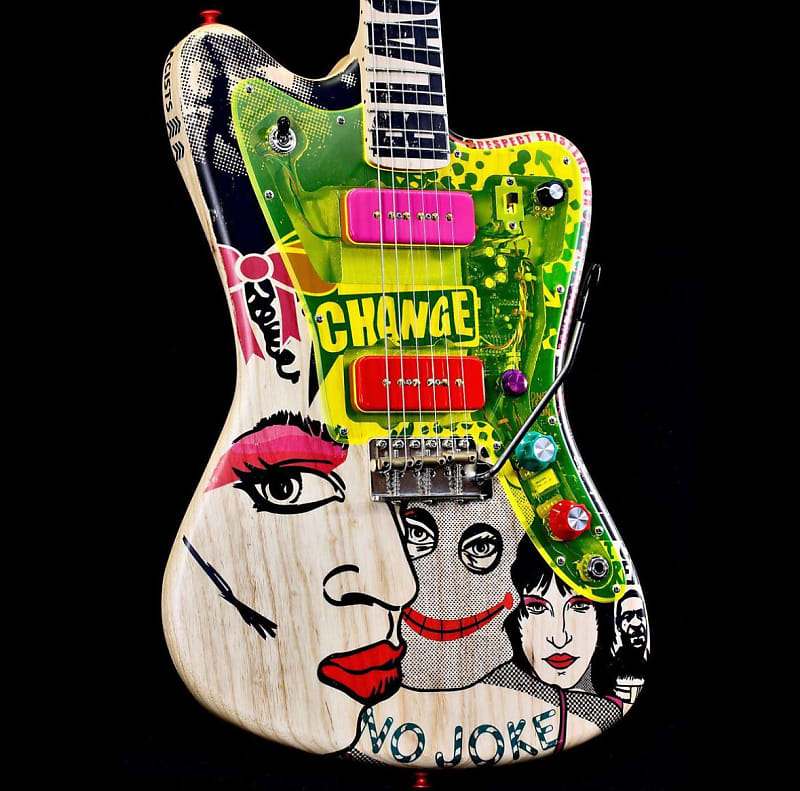
First of all, do we think that in order to fabricate the future we really have to plunder the past? Frank Deimel from Deimel Guitarworks reckons it’s important to know what has already been invented and, as he puts it, to understand the temporary context in which some of those inventions have become a success.
"If there are useful historic design bricks," Frank explains, "they’ll keep being used, as they are also time proven. I think the history will forever be in the DNA of a guitar, and those that become obsolete will be dropped automatically. Design-wise, we are overloaded with the history of how an electric guitar should look in the future."
So maybe it’s impossible to ignore all that as we go forward? Frank continues: "Certain shapes have immovable reasons to be as they are. The art is to ‘quote’ them as a historic reference—so they will survive also in the future. But their function might change to another meta-level, where a certain shape or kind of finish is connected to a certain sound expectation. And that’s not meant to be copying, it’s meant to be creating something new by ‘quoting’ an ingredient, with a certain purpose for doing so."
We’ll have to make improvements on the new frontier. There’s a hubbub around the table. Lighter-weight guitars would be welcome, somebody’s saying. The need for ever more affordable instruments gets a few nods. Flatter and manufacturing-friendly finishes, perhaps, and better neck stability. Plus, of course, electrics that are more responsive, versatile, and playable.

But hold on, suddenly everyone’s saying "sustainable materials" all at once. Spring Li from 10S Guitars calms us down and sums it up. "More sustainable materials should be the most important part of the guitar-making future," he says. "We can find some now, but they’re not as good as real woods—the tone, and the service life, those are the problems. So we do need to look for useful renewable or recycled materials, as well as energy-efficient production."
Justin Norvell from Fender reckons Leo was simply being pragmatic back in the ‘50s when he decided to use widely available and fast growing woods such as maple and alder instead of tropical hardwoods—even if now that might seem like a prescient move. "We continue to evaluate new materials and options all the time," Justin says, "but the industry and players have a strong nostalgic pull for the ‘original recipe,’ so it takes some time. But even small moves, like using streaked ebony instead of solid black, are extremely helpful."
Timeless Pickups
OK, let’s shift to some specifics. Surely there’s nothing new to be done in the future with pickups? "That’s stupid," says Dieter Gölsdorf from Duesenberg. "I’m just developing a better P-90 pickup. Or look at our our Split/King humbuckers. There are still so many possibilities."
Matt Oram from Fidelity Guitars agrees. "Broadly speaking, yes, most magnetic pickups are pretty similar. That said, the small improvements that an experienced pickup winder makes to a design can bring that magic which turns a dull instrument into something special. In that regard, there’ll always be room for improvement."

Pickups are simple machines, Otto D’Ambrosio from Eastman Music Company acknowledges, but he thinks of them as the first and most important part of electric guitars. "Pickups will change and bend with music styles. There’s also our overall perception of what a desirable tone is, and this changes too. Just think about how much tone has changed from the ’50s or ‘60s to the present day."
The future of pickups will be about tweaking accepted themes, says Justin at Fender. "Builders try many things and designs—mini hums, noiseless single-coils, optical pickups, active pickups, all the strange ‘60s pickups like gold foils, as well as things like Lace Sensors, Fluence, and so on. But the market still gravitates 95 percent to the ‘primary colors,’ and that inevitably drives what builders use."
Let’s focus in further on the future for pickups. Joe Naylor from Reverend Guitars already uses different shaped polepieces for the low and high strings, which he says optimizes the EQ. "Polepiece shape can have a radical effect on tone," Joe explains, "and I believe there’s a lot more to be explored in this realm."
The magnets are changing, says Spring from 10S. "There’s neodymium, or hybrid combinations—new approaches can make new tones. Then there’s integrated electronics, built-in preamps, active EQ, and multiple pickup signals. And new materials," he adds, "such as carbon composites or innovative alloys, both of which are already used in some pickups."
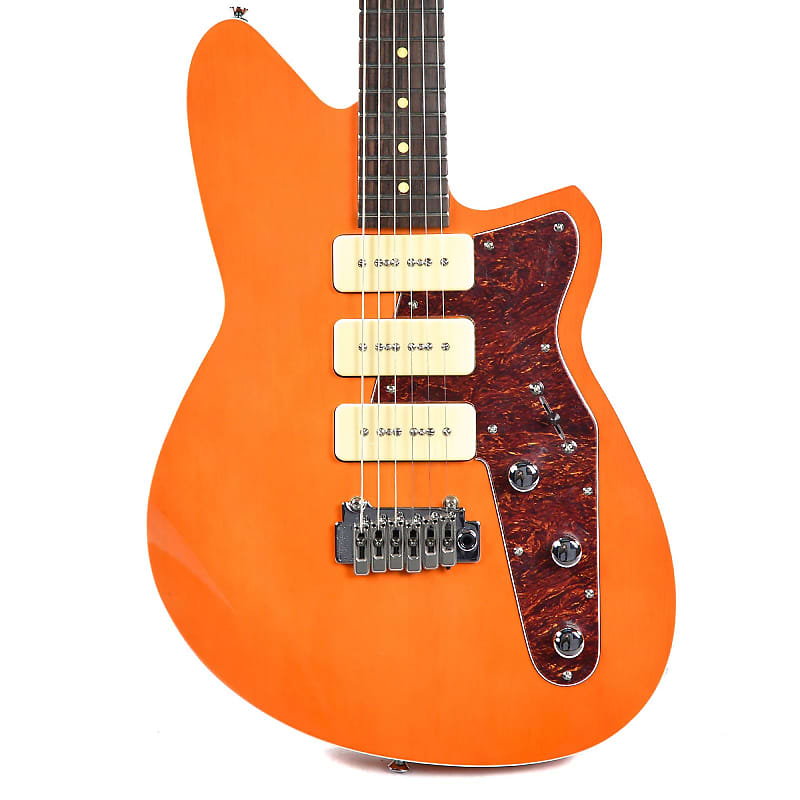
Tim from Fender is well known for his pickup expertise, and he notes that electric makers have had a very long time with magnetic pickup technology—and that a lot of it hasn’t changed much. "There are more powerful magnets available now than in earlier years," he says, "and these will allow us to design with different geometries than were possible earlier. Fishman’s Fluence pickups use traces printed on PCBs instead of wire, which eliminates a variable in manufacturing and would also allow some different geometries in the future."
Tim sounds a cautionary note, however, about going too far. "Our tribal experience with pickups tends to cause us to select for basic tonalities and sounds that we recognize. Many ‘modern’ pickups give us a far larger frequency range than historic ones—and oftentimes it’s more information than players need or want."
Mat Koehler from Gibson suggests we take a look at how AI is shaping discussions about product development across every industry. "Might it be possible to have active tone-shaping on your guitar?" Mat asks, wondering if soon you might be able to tell Siri to make you sound like, say, Led Zeppelin I.
Mat votes for more modular thinking. "It should be easier to swap out pickups—or even the aesthetics of a particular instrument. But I do think advances in magnetics will provide new tones. And I believe the tones we identify as being most organically linked to the genres we emulate will influence pickup demand most—which is another way of saying most guitarists do indeed tend to be fairly traditional in their pickup tastes."
Controlling the Future
We might need new controls to supervise new pickups of the future. Jol Dantzig from Dantzig Guitars points to Seymour Duncan’s recent Bluetooth-controlled HyperSwitch. "That," he says, "seems like a logical application of modern tech to the age old problem of—well, of creating new, unusable tones instead of, say, working on your hand vibrato." Laughter around the table. "Seriously, though, I personally want to try it. And when some manufacturer manages to put AI into a pedal, none of this—including learning to play well—will matter."
Some nervous laughter now—but Blue from ESP is intrigued by that HyperSwitch approach. "It’s an area where players need to be introduced to functionality they didn’t know they could utilize," he reckons. "But I can see guitars in the not too distant future coming stock with some similar yet simple user-assignable functionality."
Matt from Fidelity says we’re still using the same basic components from the ‘50s for good reasons. "They work, they’re cheap to make and replace, and they’re easy to understand and modify. If I could change one thing, then I’d like to see us move away from toggle switches with unreliable sprung contacts—an anachronism too far! That’s why for my guitars I use high quality modern alternatives. But otherwise, I don’t have any real problem with guitar electronics being well behind the times."
The important thing about controls will always be quality, says Mat from Gibson. "Really good quality electronics will let you hear your instrument better. And we’ve seen a lot of innovative thinking with modeling guitars, but nothing that really seems to stand the test of time yet—or at least nothing that isn’t just emulating something else simpler."
Justin from Fender talks about the theme that seems to be hanging over many of our deliberations at the table today: old versus new—or, to be more precise, how much of the old there might be in the new. "With Fenders in particular being so modular in nature," he says, "we’re exploring more solder-less tech that’ll enable easier modding and swapping at the player level of componentry. Again, there’s a lot of traditionalism still at play, so while on one hand we’re building PC mount circuits and the like on pots, on the other hand we’re also reissuing old oil and paper capacitors for the purists."
Tomorrow's Trems
The subject shifts to hardware, and Jol from Dantzig is philosophical. "The interesting thing about hardware—and more—is that so much of it is driven by fads," he reckons, "and the public perception that real innovation doesn’t know how to lead or even if it should. At the moment the real innovation is in recording and in effects."
Otto from Eastman takes a broad view and predicts there will be advances in guitar production processes in tandem with 3D printers. "With this new technology, you can approach design without some of the constraints of classic metalwork. It’s known in the industry as generative design—and all this means is that in the future, hardware might not look like it does today. It will perform the same function, but the design is driven from the task it is required to do, not the preconceived idea of what it is. I’ll still be looking for the historical significance in the parts—just in a way that connects us to the electrics of the future."
Almost everyone agrees that tuning stability will get a lot more attention. Which inevitably leads us to vibratos. Or tremolos, if you prefer. The Floyd Rose is quickly nominated within our crystal ball of future electrics as a game-changer of the past that might provide some clues about things to come.
Tim from Fender naturally keeps an eye on the subtle changes or improvements—or both—that take place in classic hardware. "But none of them that I’m aware of now will fundamentally change how the instrument is used in the way that the Floyd Rose bridge changed music. Things like that don’t happen often. Many components are constrained by their functions and the geometry of the guitars they’re used on. As with other things, it largely comes down to costing—there’s no reason to use exotic materials if they quintuple the price of the component and don’t improve function by the same percentage."
Blue from ESP: "Someone is always coming up with a more clever way to lock down hardware, or the string, and eliminate tuning issues. The Floyd Rose mods and options we’ve been seeing lately from brands such as Gotoh, FU-Tone, and Sophia are all excellent. So there’s a bridge innovation that’s what—43 years old? And it’s still being refined."
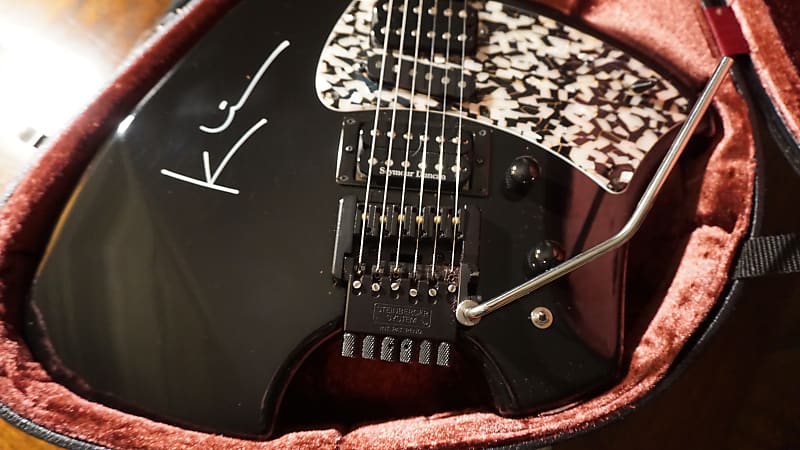
But what happens, asks Chris from DiPinto, when guitarists say they don’t like the Floyd Rose or its siblings, and they expect their retro tremolo to stay in tune? "That’s a tough fix," he admits, "but I see the possibility of combining a retro look with a clamped nut system that might work. I’ve got some ideas!"
Mat from Gibson mentions another historic vibrato. "All the way back in 1984, Ned Steinberger changed the game with the TransTrem," he says. "The challenge since has been making complex engineering concepts more mainstream in terms of creation, implementation, and demand creation."
And Joe from Reverend neatly sums up our hardware chat. "I think most future changes in that area will be geared toward tuning stability. Locking tuners are already popular. It seems like everyone’s trying to design the ultimate vibrato right now. And we’re now seeing a lot of improved versions of vintage vibratos. But I also think we’ll see fewer locking nuts, thanks to better tuners and low-friction nuts."
Wooden It Be Nice
Suddenly, we’re back in the forest. Will we all be playing electrics made out of something other than wood in, say, the 2030s? "To paraphrase my good friend the late Dan Smith—a Fender legend—we won’t have to," says Jol from Dantzig, "because we’ve made enough already." Dieter at Duesenberg says not all of us will play non-wood guitars, but some might. "Guitar players will remain traditional and stubborn," he says by way of explanation.
If the transition from wood to some other material was going to happen, says Matt from Fidelity, then we’d have made that transition already. "Tonal considerations aside, there’s something fundamental about the feeling you get from putting your hands on an object made from wood," he says, "which I don’t think we’re going to move past any time soon—and this applies to most instruments, not just guitars. I definitely think we’ll see the majority of guitars made from different species of wood by 2030, though, with a focus on sustainability and less emphasis on exotic hardwoods."
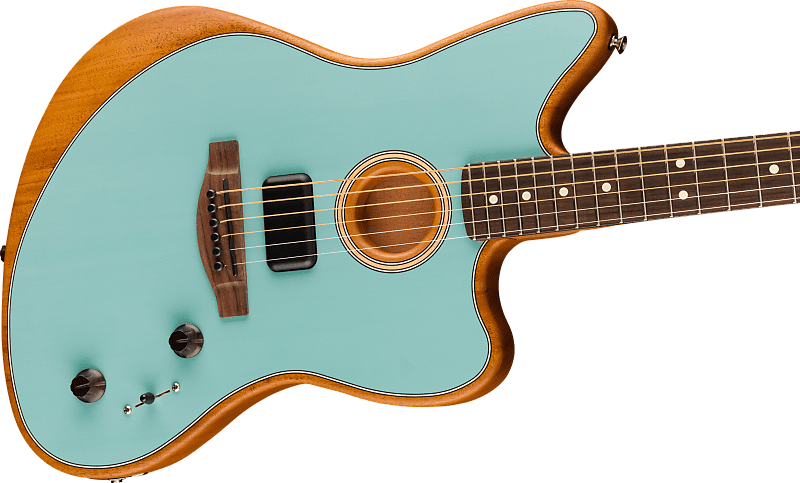
Joe from Reverend puts the maker’s position simply and directly. "Wood still offers a performance-to-price ratio that’s unbeatable." Chris at DiPinto believes we need to get away from cutting down trees that cannot be replenished quickly. "So I’m all for a composite of some sort—but this time, can we please make it lighter than the Gibson Sonex."
Mahogany is an obvious example where we’ll continue to look for alternatives, says Frank from Deimel. "So, for the future, use old, reclaimed mahogany, or prove to your audience that cherry, pear, or apple have another kind of great tone. Nobody in the seventh row of your concert will discuss your mahogany!"
Mat from Gibson: "I like the idea of playing with alternative materials in service to tone-shaping and cool aesthetic. But once your ears are used to wooden instruments, both in playing and listening to recorded music, it’s going to be hard to branch into unprecedented territories." Spring from 10S: "As environmental awareness continues to grow, musicians’ tonal preferences may evolve over time, sparking interest in exploring new sonic possibilities. That being said, wood has long been cherished for its tonal qualities, resonance, and aesthetic appeal. So I think wooden electric guitars will continue to be popular."
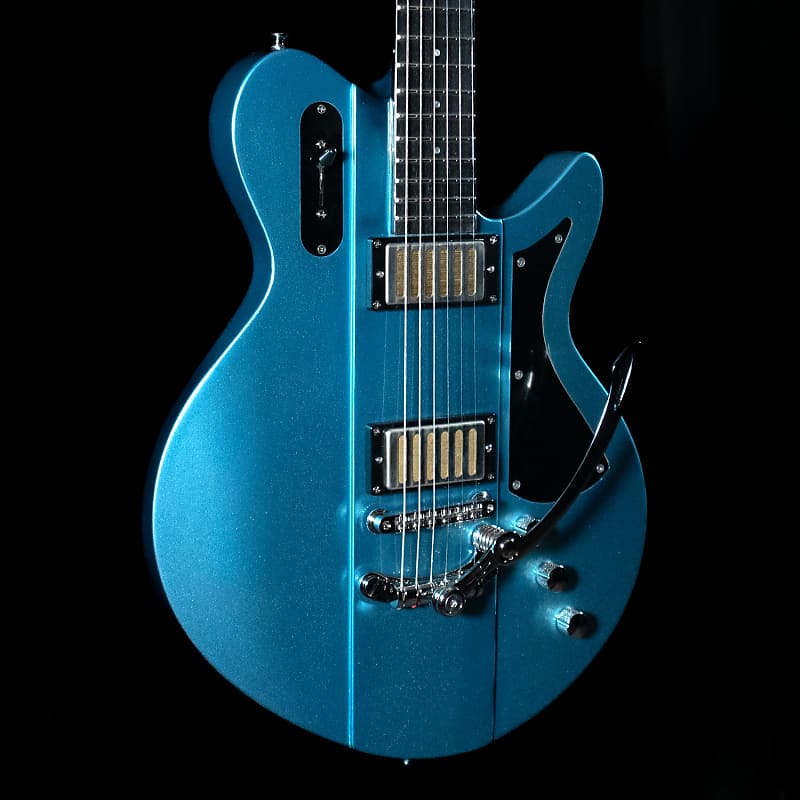
Wood will be the sought-after material for guitar makers and guitar players, Otto from Eastman agrees. "It’s our connection to the Earth. Grain lines remind us of water and waves. Trees give us air to breathe and are giants on this world. Woods are some of my prized possessions. I believe that making a guitar out of an honestly harvested tree is the most honorable use of a tree. But the type of wood that’s used will shift in the market. Sustainability will become more in focus as we head into the future and we try to be more eco-responsible."
Tim from Fender calls on long experience to assist our view of a possible future. "Over the years, I’ve played many electrics made from alternative materials," he tells us, "as well as different species of wood than have been traditionally used, and none of them have made a major change in the industry from a musical or manufacturing perspective. Wood is renewable and generally cost-effective, unlike many more ‘technological’ materials—plastics, composites, and so on—which tend to be pretty expensive at the scale most companies can operate. As long as trees are available, even if different species are used, I think there will be wooden electric instruments."
A Fine-Tuned Future
Well, it’s been a tough morning for our prophets, and there’s a growing sense around the table that lunch shouldn’t slip too far into the future. Joe from Reverend has a good point as we wrap up. "Most of today’s guitars are still based on or heavily influenced by guitar designs from the ’50s and ’60s," he says. "I don’t see that changing much. Look at the violin—the basic design has been the same for centuries. In the next decade, we’re going to see far more radical changes in amplification then we will with guitars."
Jol from Dantzig leans on the history some more. "The future looks a lot like the past through the lens of a fun-house mirror. Playing guitar for many is 90 percent cosplay, and there’s so much history to resurrect. The trick is to do it in a new way that honors the past but that doesn’t look or sound like a straight rip-off."
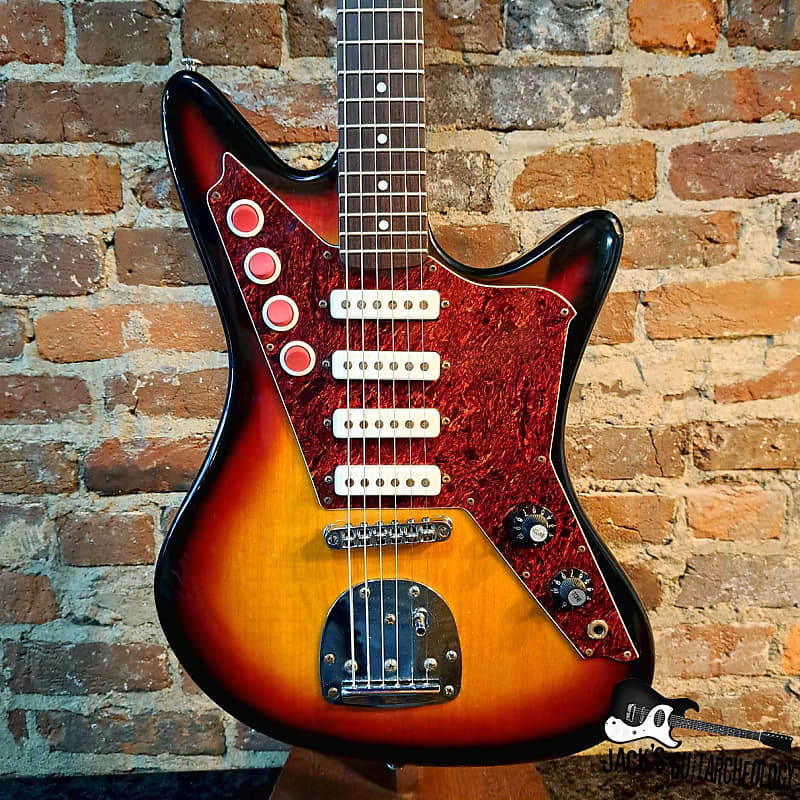
Chris from DiPinto points at the way old technology can be used by an artist in new musical ways. "Old hardware can often become the latest craze. Just look at Bigsby tremolos. We thought they were all but dead in 1988!"
And what of the players of the future? "Guitar is an endeavor that we estimate 90 percent of new players quit," says Justin from Fender. "Why? Because it’s hard. Some of that is the inherent skill it takes to play, but some is related to the instruments themselves. So what about a modern string design that will be less taxing on un-callused fingers, for example?"
Mat from Gibson smiles as he tells us that, personally, he’ll probably be playing his vintage guitars long into the future. "But my ideal guitar for the future of the musical instrument industry," he clarifies, "would be one that has fun and inspiring modular elements and extreme attention to detail and quality."
Future guitar makers will still benefit from a strategy, says Otto from Eastman. "It’s often best to start with a set of rules," he suggests. "This creates boundaries that define the design. My list reads: Ergonomic—player first; Musically responsive; Playable and versatile; Exciting—new with a nod to the past. Those definitions answer all the questions when I set out on a new project."
Frank from Deimel says he hopes that future electrics will finally break free of what he calls the endless copying of the past. "They should become adult, they should become tools that include all the best from the past, but adapted finally to today’s requirements—to inspire young musicians around the world to still make great use of one of the sexiest musical instruments of our recent culture."
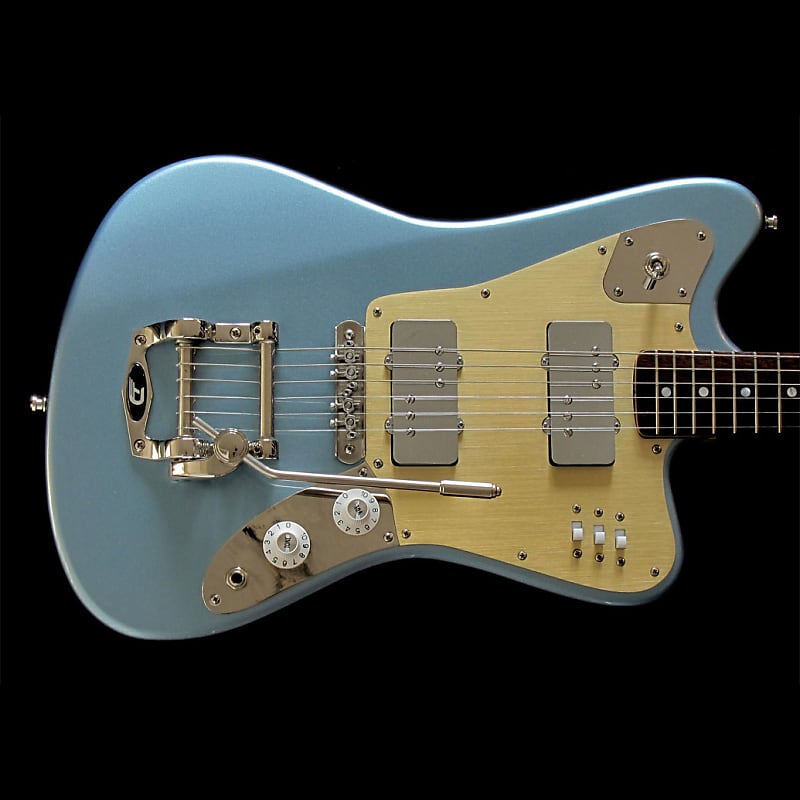
For now, I’ll leave the last words to Tim from Fender. "We are, to a great extent, prisoners of our past with guitars," he says. "We’ve had over 150 years of X-braced steel-strings, for instance, and almost a century of electric guitars with magnetic pickups. All of that, in terms of ergonomics and sound, generates a tremendous amount of inertia."
And newer designs? "All of them," Tim says, "from headless to fanned frets to pickups using light instead of magnets, all are forced to confront the huge amount of prior art. All future ideas must be judged by a simple set of questions: Why is this better? What problem does it solve? How does it inspire players to think and create differently?"
About the author: Tony Bacon writes about musical instruments, musicians, and music. His books include Electric Guitars: The Illustrated Encyclopedia and Electric Guitars: Design & Invention. Tony lives in Bristol, England. More info at tonybacon.co.uk.
